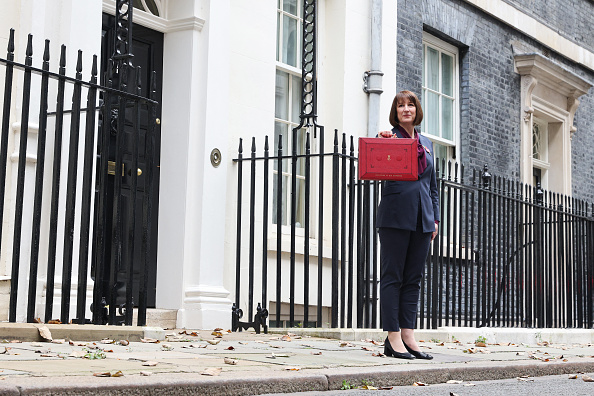July 4 marked the most recent phase of coronavirus restrictions easing in the UK, which allowed for pubs, restaurants, and private events to return to trade post-lockdown. Engineering, construction, and non-essential retail had already re-opened, however many are discovering that it isn’t simply a case of “business as usual”.
The Government has offered many different forms of financial aid during the pandemic to help businesses weather the economic freeze, including the Coronavirus Job Retention Scheme (CJRS), Coronavirus Business Interruption Loan Scheme (CBILS) and Bounce Back Loans (BBL), which have all been greatly received. However, even with businesses opening their doors to the public again, there are new rules and restrictions in place which must be followed which will impact on the bottom line of businesses and squeeze margins.
So, the challenge now isn’t so much restarting operations, but finding a way to do so profitably.
>See also: A quarter of entrepreneurs don’t use social media for their small business
Demand for sales
The Government was praised for its £330bn war chest at the beginning of lockdown to help businesses survive and protect the nation from mass unemployment. The idea was that it would protect the economy and ensure that spending would resume once restrictions were eased.
However, initial signs show that consumers aren’t ready to part with their money in the same way they were pre-lockdown, as the uncertainty of the virus remains. Although reports showed that May was an improvement compared to April, spending remained significantly lower than in 2019.
Depending on the industry and business model, some organisations will fare better than others. Take high-street staple, Primark, as an example, due to its lack of e-commerce offering, its takings stood at £0 during April and May after its stores were forced to close.
With the furlough scheme due to come to an end, the lack of consumer appetite may still cause an influx of redundancies. Sales and activity levels will return eventually, but with a long road of uncertainty ahead, owners cannot afford to sit on making such decisions.
>See also: Top 7 turnaround tips to save your small business from going under
Turning a profit
With question marks over consumer demand, business owners are faced with the reality that profitability remains uncertain, even as industries return to trade post-lockdown. Even those that have seemingly flourished during the height of the pandemic, like supermarkets which have experienced increases in trade, have had their profit margins stretched. This is partly due to general merchandise and non-essential items not being purchased, but also because of the vast operational changes which have been made. These include reduced opening hours to facilitate shelf restocking, additional staff, and limited customer numbers in-store. So, while their food sales have done well, the time and effort it has taken to continue operating safely has brought in significant additional costs.
‘Even heavyweights like Amazon are struggling to make a profit’
Even heavyweights like Amazon are struggling to make a profit, despite reporting a 28 per cent increase in sales. What is important is that business owners are aware of these costs and considerations upfront. This way they can be factored for in projections and budgets, thereby ensuring no surprises.
Efficiency and effectiveness
It is unrealistic to believe that productivity will return to pre-COVID levels right away. Social distancing means that factories, offices, and shops must limit the number of people inside a building at any one time due to space limitations. Businesses will therefore need to implement staggered working hours to compensate, but this will then impact on innovation and collaboration.
Getting to work could even be difficult. If employees rely on public transport, the number of people allowed on board a bus has for example been drastically reduced, leading to longer commuting times which will also need to be considered.
Supply chains
It isn’t all doom and gloom. Despite coronavirus and the national lockdown imposing uncertainty in many areas, it also presents businesses with opportunities as they return to trade post-lockdown. We have already seen that the pandemic is fast-forwarding existing trends, and this should be seen as a long-term investment in the future.
This includes simple concepts like cloud software, remote working, and cashless payments. These have been talked about for years, and some businesses have implemented them to a certain degree, but these practices have now been fully embraced.
Another example is the reverse of globalisation. The emergence of the virus has exposed reliance on cross-border trade, with the supply chains of many businesses now incorporating goods and services travelling across several countries, or even continents. Previously, this was done in the name of efficiency, but now this is being called into question.
What used to be a great way to benefit from cheap goods is now a very tenuous strategy. Instead, businesses are bringing production home and sourcing from local suppliers. Although reshoring is a significant capital investment for industries that require things like warehouses or machinery, it can also be used as a selling point to attract new business. In manufacturing for example, a product made in Britain is often perceived to have a hallmark of quality. Equally, a restaurant championing local produce will have a potential marketing edge over the competition using imported ingredients.
Keep your costs down
Businesses that have benefitted from a Government-backed loan, or even those which haven’t, will likely be focussed on levels of debt given sales are likely to be lacklustre and margins squeezed. The days of cheap finance could be over so focus will turn to tight and accurate cost controls.
This involves developing budgetary discipline and financial targets, monitoring progress, identifying areas where cost savings can be made, optimising tax profiles and conducting timely financial reporting. If this isn’t something you specialise in, it is essential that you work closely with your accountant to implement necessary fiscal discipline.
How to trade post-lockdown
Although the future seems bleak on the face of it, remember that every challenge provides an opportunity. Reopening may seem like a daunting task however it provides businesses with the opportunity to win new customers, gain brand loyalty, and pivot by finding new ways to service customers, creating new revenue streams at the same time. Owner-managers just need to be aware of the additional costs and uncertainties upfront to best prepare for the future.
Stuart Crook is a partner at Wellers
Further reading
4 lessons from Germany on how British SMEs can thrive post lockdown








